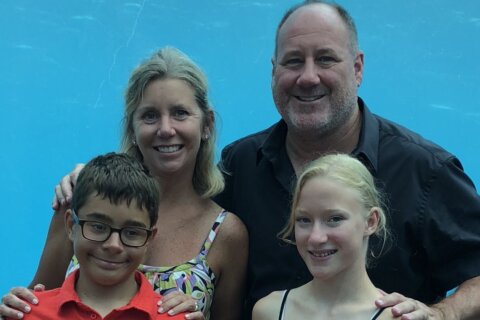This content is sponsored by PenFed Credit Union, federally insured by NCUA.
Emergencies can happen at any time. You may need a new roof, to fix a broken refrigerator or make up for lost income. Making sure you have an emergency savings fund is vital to help you get through a season of tough financial times.
Emergency savings funds can help you pay for any large and unplanned expenses and are an important part of your financial security. And not all Americans are saving with an emergency in mind. Nearly half (49 percent) of U.S. adults have less savings (39 percent) or no savings (10 percent) compared to a year ago, according to a February Bankrate survey of 1,000 adults. In fact, the survey found that more than one in three Americans have more credit card debt than emergency savings — the highest percentage in 12 years of Bankrate asking this survey question.
The experts at PenFed Credit Union encourage an emergency savings fund because “it serves as your financial safety net, ensuring you have the resources available to deal with the situation without incurring debt or struggling to pay your bills.”
Emergency funds can cover things like unemployment, unforeseen medical expenses, major home repairs, home appliance replacements and car repairs. PenFed’s experts say to avoid using your emergency funds on things like vacations, weddings, credit card debt or gifts.
So how much should be in your emergency fund? Your lifestyle should help dictate that that number, according to PenFed.
“A good rule of thumb is to have enough reserves on hand to cover three to six months’ worth of expenses if you weren’t bringing in any income during that time,” PenFed’s experts said, adding that that number should factor in costs for your rent or mortgage, groceries, bills and other essentials. The number can leave out non-essentials such as dining out, entertainment and clothing, since those can be cut during tough financials straights.
Emergency funds can’t be created overnight. They take planning and intention. To start an emergency fund, it helps to develop a personal budget. This helps you figure out where your money is going and find out how much you need in your emergency fund.
While budgeting, one option to consider is the “Pay Yourself First” budget, which prioritizes your savings, according to PenFed. To build this type of budget, you start by noting your monthly net income. After that, you list your monthly savings goals with a dollar amount. Then subtract your savings total from your monthly net income. What’s left goes toward paying bills and other expenses.
“If you want to protect your future and keep tabs on your monthly finances, but you don’t want to feel tied to the constraints of traditional budgeting, this approach may be for you,” PenFed’s experts said.
Once you have an emergency fund, you need to put it someplace safe (and a piggy bank or glass jar won’t cut it.) The best spot for an emergency fund is an interest or dividend-bearing account or a safe, short-term investment that allows you to quickly access money without facing penalties for withdrawals, said PenFed.
A traditional savings account is an option for your emergency fund. You can access your money quickly, there are no withdrawal fees, and you can link it to your checking account for immediate transfers. However, regular savings accounts may not help you quickly grow your money through interest or dividend returns.
“Most accounts paying on average 0.03% annual percentage yield (APY), the amount you earn in interest or dividends won’t even keep pace with the typical 1% to 2% annual inflation rate,” PenFed’s experts said.
That’s where high-yield savings accounts come in. These accounts function essentially the same as standard savings accounts except they offer higher APYs, which means they earn more than regular savings accounts. PenFed’s High-yield Savings Account – also called the Premium Online Savings Account —pays higher dividends rates than most savings accounts in the market. High-yield accounts are usually only available through online banks – which could be a drawback if you would rather go to a physical location to withdraw funds or make deposits or if you need funds quickly.
Another option is a money market savings account, which offers yields generally the same as high-yield savings accounts, and many allow you to write checks and use a debit card to access funds much like a checking account. Money market savings accounts typically require a larger minimum deposit to open an account than other options, PenFed points out.
A Certificate Account is a type of higher-yield savings account where, in exchange for locking up your money for a fixed period of time, your account will draw compound dividends at a fixed rate during the certificate’s term. The trade-off for this enhanced earning potential is access to your money. A certificate requires you to leave your savings in an account for a set period, which ranges from 30 days up to 10 years depending on the term you choose, PenFed said.
A diversified approach where you put some funds in certificates, money market accounts and high-yield accounts could be the best option to ensure you have funds available based on how much you need and how quickly you need them.
“This will ensure you have funds you can tap into quickly for smaller emergencies and additional resources earning as possible for more substantial life events that might be on the horizon,” PenFed said.
There is never a better time than now to get started to make sure you’re prepared for whatever life throws at you.
“Financial emergencies are unpredictable, both in their timing and severity. So, if you haven’t already, establish an emergency fund now to protect yourself and your family from rainy days in the future,” PenFed’s experts said.
Read more about emergency savings funds on PenFed Credit Union’s website. PenFed Credit Union is federally insured by NCUA. To receive any advertised product, you must become a member of PenFed.







